
The Joint Chiefs of Staff (JCS) is the body of the most senior uniformed leaders within the United States Department of Defense, which advises the president of the United States, the secretary of defense, the Homeland Security Council and the National Security Council on military matters. The composition of the Joint Chiefs of Staff is defined by statute and consists of a chairman (CJCS), a vice chairman (VJCS), the chiefs of the Army, Marine Corps, Navy, Air Force, Space Force, and the chief of the National Guard Bureau. Each of the individual service chiefs, outside their JCS obligations, works directly under the secretaries of their respective military departments, e.g. the secretary of the Army, the secretary of the Navy, and the secretary of the Air Force.

Kenneth A. Minihan is a former United States Air Force lieutenant general who served as the director of the National Security Agency and the Defense Intelligence Agency, retiring on May 1, 1999.

Russell C. Davis is a retired United States Air Force lieutenant general who served as commander of the District of Columbia National Guard and Chief of the National Guard Bureau.

John C. Acton is a retired United States Coast Guard rear admiral who served as the Director of Operations Coordination for DHS. Acton formerly served as Director of the DHS Presidential Transition Team.
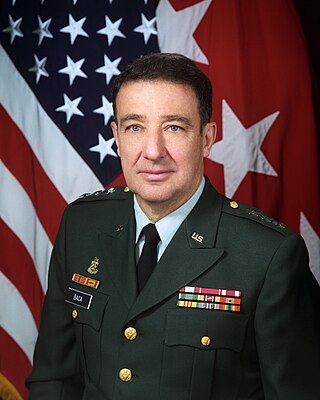
Edward Dionicio Baca was a Lieutenant General in the United States Army who was the first Hispanic to serve as Chief of the National Guard Bureau.
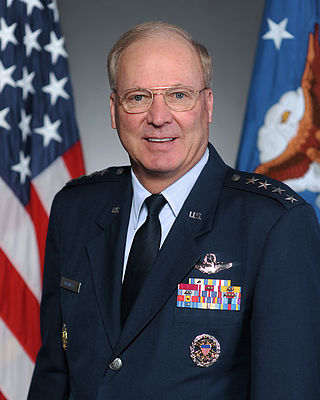
Craig Richard McKinley is a retired United States Air Force general who served as the 26th Chief of the National Guard Bureau, serving from 2008 to 2012. He is the first officer from the National Guard to achieve the grade of a four-star general.
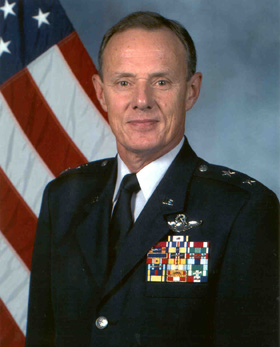
Philip G. Killey is a retired United States Air Force officer. He attained the rank of major general, and served as Adjutant General of the South Dakota National Guard, Director of the Air National Guard and Commander of First Air Force.

Frank J. Grass is a retired United States Army general who served as the 27th chief of the National Guard Bureau.

Donald E. Edwards was an American military officer. He was most notable for his service as adjutant general of the State of Vermont from 1981 to 1997. The adjutant general is the senior uniformed officer in the state and responsible for the organization, training and equipping of nearly 4,000 members of the Vermont Army and Air National Guard. His position as Adjutant General also included appointment as Inspector General and Quartermaster General, and head of the State Military Department, including the Veterans Affairs office.

Major General Steven A. Cray was the Adjutant General of Vermont. In this post he served as the senior uniformed officer in the state, and was responsible for the organization, training and equipping of the 4,000 members of the Vermont Army and Air National Guard. As adjutant general, he also served as inspector general, quartermaster general and head of the State Military Department, including the Vermont State Guard and Veterans Affairs.

John Robert D'Araujo Jr. is a retired United States Army major general who served as Director of the Army National Guard and an official with the Federal Emergency Management Agency. He is the first Portuguese American to achieve the rank of major general.

Roger C. Schultz is a retired United States Army lieutenant general who served as director of the Army National Guard.

Clyde A. Vaughn is a retired United States Army Lieutenant General who served as Director of the Army National Guard.

Timothy James Kadavy is a retired United States Army lieutenant general, who served as the 20th director of the Army National Guard from March 27, 2015, to March 25, 2019. He previously served as the special assistant to the vice chief of the National Guard Bureau, the adjutant general of the Nebraska National Guard, deputy director of the Army National Guard, and as the commander of Combined Joint Inter Agency Task Force-Afghanistan, which was part of the NATO International Security Assistance Force mission in that country. Kadavy was nominated by the President to become the Vice Chief of the National Guard Bureau with the rank of lieutenant general, on March 5, 2019. The Senate returned his nomination to the president without action on January 3, 2020. After leaving his assignment as the director of the Army National Guard, he served as a two-star special assistant to the chief of the National Guard Bureau from May 23, 2019, until his retirement on August 3, 2020. He retired from the Army with the rank of lieutenant general after over 36 years of service.
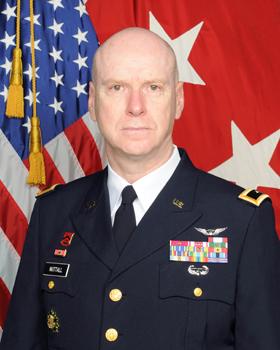
James W. Nuttall is a retired United States Army major general who served as deputy director of the Army National Guard and deputy commander of the United States First Army.

Judd Henry Lyons is a retired Army National Guard officer. After retiring from the military the rank of major general, he was appointed to the Senior Executive Service on August 7, 2017. Since 2018, he has served as Deputy Assistant Secretary of Defense. In this role, he is the principal advisor to the Assistant Secretary of Defense for Manpower and Reserve Affairs in support of the ASD's role of providing overall supervision of manpower and reserve affairs for the Department of Defense. He is responsible for both the integration of reserve affairs across the United States Department of Defense and strategic engagement on all Reserve Component matters.

Walter E. Fountain is a retired United States Army officer who attained the rank of major general. In his final assignment, he served beginning in January 2018 as Director of Domestic Operations and Force Development at the National Guard Bureau. His previous assignments include Assistant to the Chairman of the Joint Chiefs of Staff for National Guard Matters, deputy director for Domestic Operations (J-3) at United States Northern Command, Assistant Adjutant General of the Oklahoma National Guard, and acting deputy director of the Army National Guard.
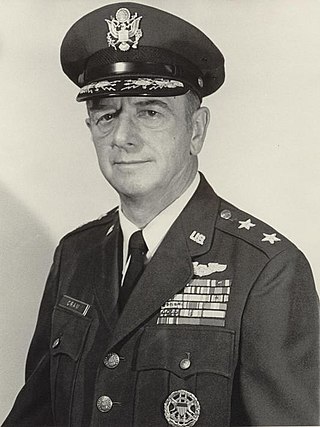
Reginald Maurice Cram was a United States Air Force officer who served as the adjutant general of the Vermont National Guard.

Gregory C. Knight is a United States Army officer. In 2019, he was selected to serve as Adjutant General of Vermont.

Jeff W. Mathis III was a career officer in the United States Army. A longtime member of the Army National Guard, Mathis attained the rank of major general before retiring in 2014. A veteran of overseas deployment to Africa during the Global War on Terrorism, he was most notable for high-profile command assignments including Joint Task Force – Civil Support (2012–2014) and I Corps (2009–2010).




















